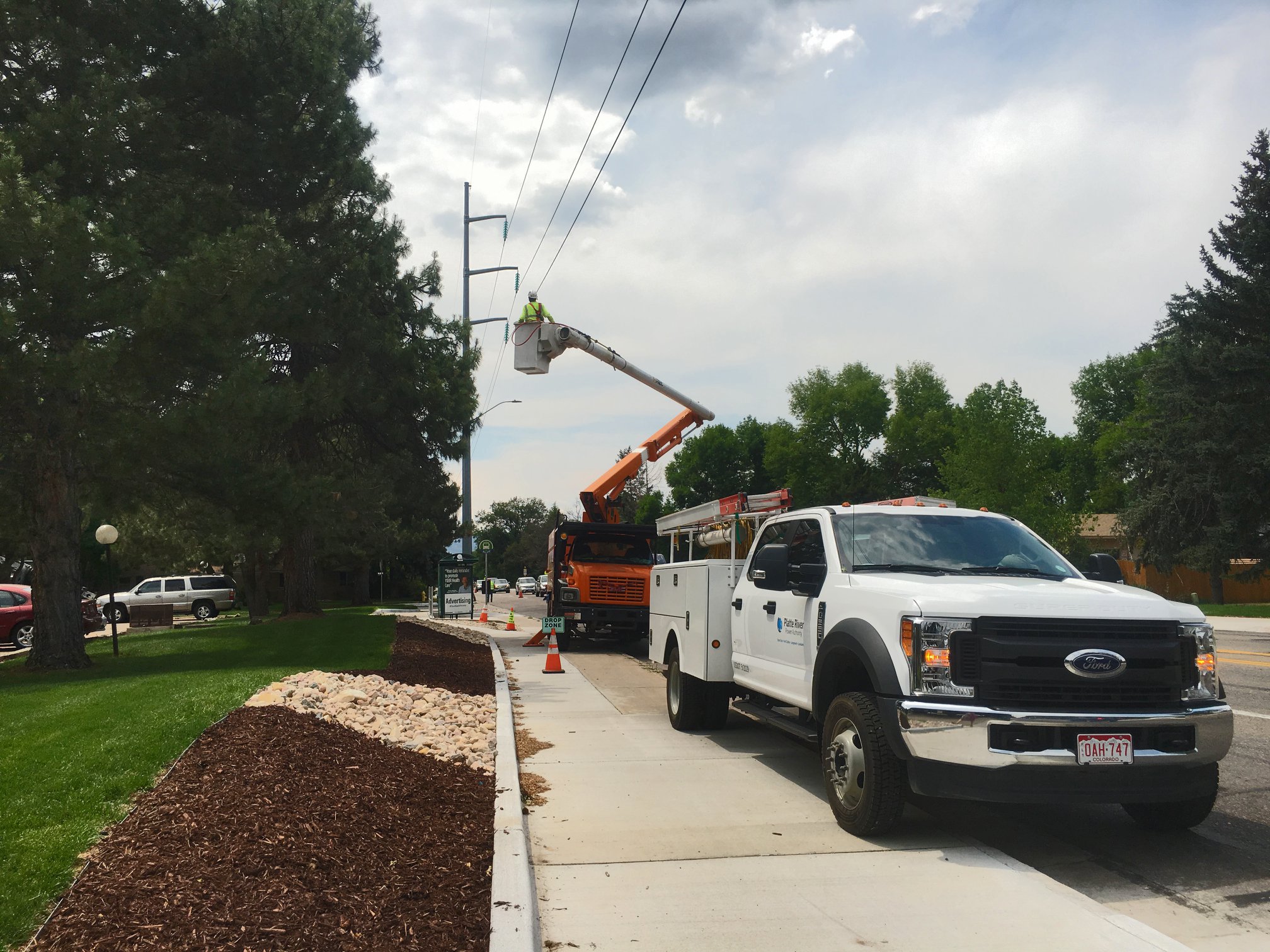
All transmission equipment is managed under rules set by the North American Electric Reliability Corporation (NERC), a division of the Federal Energy Regulatory Commission (FERC). These standards include distance between the ground and overhead lines, formulas to be used to calculate line conductor distance to vegetation, accessibility to rights of way (easements) and general vegetation management practices. Platte River works with its owner communities to comply with standards through regular inspections of management zones within transmission easements.
Collaboration with landowners
Platte River works proactively with landowners to provide information and recommendations about appropriate plantings near or beneath its transmission lines and towers. Colorado State University’s Cooperative Extension website features valuable information to help landowners select the right tree for the right location.
Platte River will attempt to notify landowners regarding work that must be done within its easement, enabling each to ask questions and/or schedule trimming or removal. Platte River will perform needed work if attempts to contact property owners are unsuccessful.
Management zones
Platte River may only allow low-growing shrubs and grasses to flourish in the wire zone both under and to the sides of its power lines. Vegetation will be evaluated and managed carefully but, in general, any vegetation more than 15 feet in height inside the wire zone will need to be removed or trimmed, depending on species, growth rate and other factors.
Within the border zone, between the wire zone and the edge of Platte River’s easement, trees will be pruned at a 45-degree angle, up and away from the wire zone, to maintain separation from power lines. Any tree that could fall onto a transmission line or is determined to be a hazard will need to be removed. All mature plant species can grow outside of the border zone, but may still require trimming as needed.
Wire and border zonesAccess and inspection schedule
To inspect and maintain its transmission system, Platte River must be able to manage safe access to its towers and power lines, and the ability to perform structure-to-structure visual inspection. This includes vehicle access lanes of 10 to 12 feet within its right-of-way, and the removal of brush and trees from towers and structural guy wires. In critical areas, heavy vegetation will be removed from easements to help prevent damage to all areas, especially to prevent wildfires.
All Platte River transmission lines are inspected on a annual cycle, though schedules may vary due to weather conditions. The schedule is based on historical growth patterns and other environmental and operational factors. Power lines with fast-growing trees may be inspected more frequently. Inspections will be conducted from the ground or air.